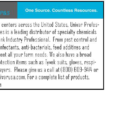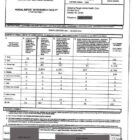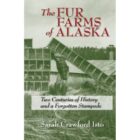Read Parker Dozhier’s “Fur Market Report” from the February 2011 issue of Trapper & Predator Caller. While it does not focus on fur farming, it is worth reading for insight into major weaknesses in the “wild fur” (trapping) industry. I have bolded the portions I think are significant. The column reads, in full: “Let’s face it: The marketing of raw fur has seen dramatic and significant changes during the last 25 years. Many of those reading this today would find it hard to believe during the ‘Boom’ years-between the mid-1970s until 1987– there were thousands of country fur buyers scattered across the country. Many states licensed more than 100 fur buyers each season. General stores, bait shops, farm supply outlets and even gas stations, often had signs hanging during season that said ‘Fur Wanted.’ Beyond the local fur buyers, there were scores of wild fur brokers in the New York fur district. These brokers had contacts with fur garment makers around the world. A country fur buyer, and in some cases even professional trappers, could ship to the broker and they were charged with negotiating between buyers and sellers. This system worked well. But sadly, this vital link of the fur trade has mostly disappeared. Some states, notably in the Southeast, do not have a single country fur buyer. Other states license fewer than 20. Our fur trade seemed to be crumbling from within. But fortunately, through shear determination, a few of these fur buyers hung on. Today, these country fur buyers serve the single most vital link in the flow of furs from producer to the ultimate consumer. Without them, the limited marketing opportunities would result in the complete collapse of the fur trade. From what I’ve seen at trapper fur auctions, visiting with fur buyers and trappers, the vast majority of fur sold today is either wet or ‘in the round.’ Most of the finished fur is sold by those who have been trapping for many years, often decades. That’s a diminishing number. How these buyers can bare the cost of traveling, running a collection route, attending fur auctions and then the labor of finishing a mountain of raw fur, and then...



